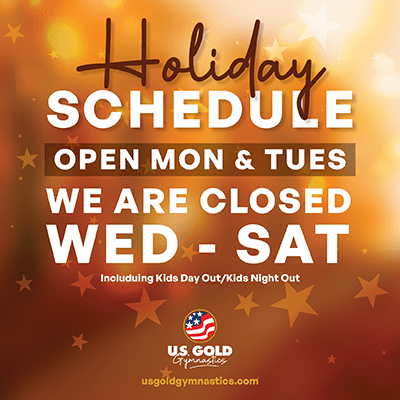
Gymnastics vs. Other Sports: Why Gymnastics is Perfect for Elementary Students
More than 55% of elementary school students participate in organized sports activities. Gymnastics is one of the top five and has been growing in popularity in recent years. Why?
Parents like you are looking for activities that provide an opportunity for their child to be physically active and develop healthy habits. They also want a way to develop their child’s social and emotional skills. And, any way to reduce screen time is a win for most parents.
Enter gymnastics! There are several reasons that more and more parents are turning to gymnastics as their activity of choice to do all of these things and more for their child. In this article, we’ll cover:
- Physical development in gymnastics
- Gymnastics, coordination, and spatial awareness
- Why individual progression is good and how it compares to teamwork
Physical development in gymnastics
Gymnastics offers your child the opportunity for full-body development. Unlike other sports that focus on repetitive motions and more specific muscle groups, gymnastics engages and involves the entire body every session. Whether your child is working on floor movements like cartwheels, rolls, and flips, or working on a particular apparatus like the vault or balance beam, or even working on strength and conditioning, you can rest assured their entire body is involved. That means they are building a strong core and a strong foundation of health and wellness.
Gymnastics, coordination, and spatial awareness
Spatial awareness refers to your ability to move and position your body in relation to other people and objects. This body awareness is a key concept to learn for elementary students. Most parents will know this after having tried to explain “personal space” to a knee-hugging toddler.
In gymnastics, your young athlete will get a healthy dose of spatial awareness and coordination as they have to run, jump and move while judging distances, angles, and objects at the same time. The amount of coordination and body awareness they learn continues to grow as their mastery of gymnastics grows. These skills are important and can also translate elsewhere in life.
Why individual progression is good and what it has to do with teamwork
Many times parents choose sports as an extracurricular activity because they are counting on teamwork to be a key concept their child learns. Gymnastics does offer the opportunity for team competition and learning together. In most cases, your child will warm up with other participants and work on conditioning as well as perfecting technique and movements together.
While you can count on your child learning about teamwork, you can also look forward to their individual growth and development. Gymnastics gives participants the opportunity to develop their own skill, ability, and performance based on their own strengths, weaknesses, and goals. They also receive their own personalized feedback, encouragement, and plan for improvement.
Individual progression means your child can work at their own pace and make progress based on their own effort on a timeline that works uniquely for them. This is helpful since in so many other arenas, such as school and team sports, your child is expected to keep pace with their peers. Gymnastics gives them the opportunity to focus on their own personal improvement as they refine their skill, practice, and grow as an athlete. Individual progression can help students build confidence, resilience, and a growth mindset.
“Gymnastics taught me everything – life lessons, responsibility, perseverance, friendship, and so much more,” said Dominique Moceanu, Olympic gymnast and gold medalist.
Gymnastics lessons are a great way to help your child build a foundation for the mental, physical, and character skills you can’t wait to see flourish in them as an adult. If you’re considering signing up your elementary student for gymnastic classes and you live near Destin or Santa Rosa Beach, contact us at
